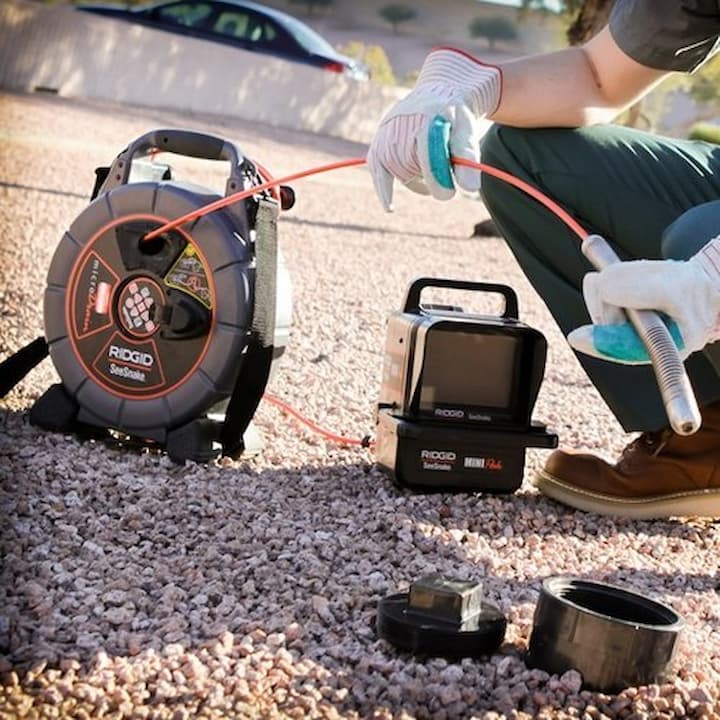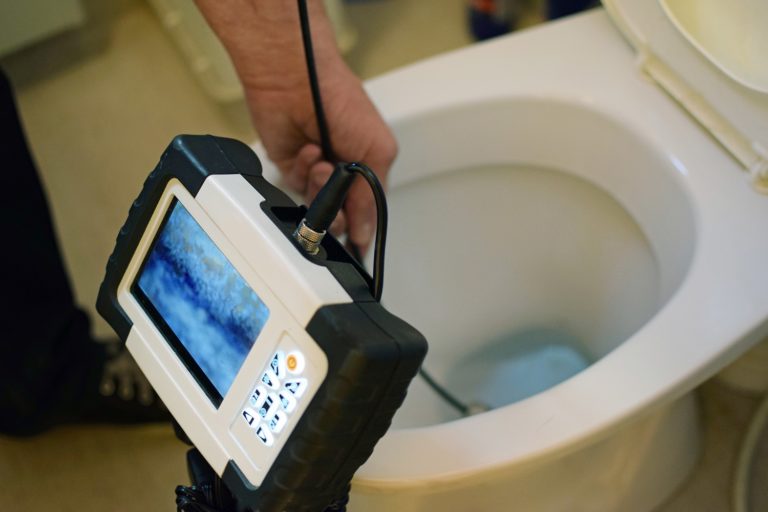Everything You Need to Know About Sewer Cameras
Clogged toilets, bubbling sinks and bathtubs, and slow drainage are more common than you think. And it’s nothing to be ashamed of. It’s not just the foul smells or the pooling water that can lead to flooding that are unpleasant. Damaged plumbing, leaks, and pipe blockage are a health hazard if not addressed on time. They have the potential to crack walls and cause serious property damage. What you’re left with is a huge cleanup job and high repair bills.
Besides the common symptoms, blocked or leaky piping shows up as reduced water pressure, waste and debris bubbling out of fixtures, and damp spots in and outside your home. Clogging can also be caused by unsuspecting piping in lawns, with water pooling in some areas and lush patches pinpointing the problem.
To rule out guesswork, homeowners are advised to get a detailed drain inspection using a specialised and precise sewer camera to locate piping and plumbing issues. The procedure is quick, non-invasive (no digging or excavation) and reveals current problems that can manifest themselves in the future. This includes cracks, collapsed pipes, corroded fittings, or something as obscure as tree root intrusions.
The Role of Sewer Cameras in Drain Inspections
Inspection cameras for pipes and sewers are advanced equipment designed to be waterproof, meaning they can perform in wet and challenging settings typical of plumbing and sewage systems. They capture high-definition stills or videos with reinforced lenses sitting inside metal housings that take the brunt of the impact in twists, turns and when running up against pipe walls.

Cameras are placed at the business end of flexible rods, differing in length depending on the circumstances. This flexibility enables drain cameras to work their way through any blockage, tight spots, fractured or collapsed piping and give a correct and detailed assessment of the condition of the piping.
The data is relayed in real-time to above-ground monitoring hubs or handheld units that house the controls to maneuver the camera through the pipe network, with the option to store it, either in internal memory or SD cards for further use.
Advanced features, including Bluetooth connectivity, the ability to embed comments or GPS coordinates that precisely pinpoint problems, and rechargeable lithium batteries ensure simple data transfer, detailed info for necessary repairs and the ability of continuous use for demanding residential or large-scale commercial inspections.
What Can a Sewer Camera Reveal?
With 4 or 8K resolution, inspection cameras uncover even minor plumbing and sewage problems. Besides recording and unveiling the overall condition of the pipes and drainage system, sewage and drain cameras are beneficial in sketching the entire pipe network (good if you’re also considering rebuilds or renovations), piping materials (especially in older homes) and of course, broken, cracked or burst pipes under the pressure of blockages.
What they also reveal are less obvious issues, like pipe damage from tree root intrusions, the condition of the fittings, stuck foreign objects and debris, and corrosion. The breadth of data then makes any necessary repairs simple, quick and cost-effective. The only instance requiring excavation is with longer sections of collapsed piping.
Camera Features that Make a Difference
Specific camera features may raise prices, but also functionality, precision and durability. Look for IP68 ratings or above to prevent water or dirt ingress and marring the clarity of captured images. This also means sapphire lens coatings that resist scratches and offer more durability.
To adjust the field of view, look for cameras with zooming and panning functionality. The default wide field of view in lenses enables operators to ascertain the condition of pipe walls, but zooming can capture problems further ahead, while panning allows the lens to move up or down and left and right for a clearer image. This is then recorded onto industry-leading, high-res sensors made by specialist camera and sensor brands (like Sony). To counter the dark settings, the camera will also have an integrated dual-tone LED backlight with adjustable brightness levels.
There’s also some serious tech in the monitoring hubs. Large TFT screens, separate keyboards, one-touch recording, on-screen distance counters, integrated WiFi or Bluetooth to transfer data to mobile devices, and even geotagging in cameras with fitted sondes provide ease of use, improved precision and quick operation.
A major component of the price of push rod drain cameras is the length and materials of the flexible rods. This can be anywhere from 20 metres for home drain inspections, to 120 metres in council and commercial sewage systems.
Rods are made of reinforced fibreglass with PVC outer coatings that provide the needed strength and protection at larger inspection distances. Inside, signals and images from the camera are relayed to the hubs via a multi-core, twisted pair coaxial cabling shield for electrical interference. The build allows the simultaneous use of underground cable and pipe locators that rely on electromagnetic signals to detect faults.
The Benefits of Drain Camera Inspections

Possibly one of the biggest benefits of drain camera inspections is that it saves home and business owners a heap of money and time from unneeded excavation work to find plumbing and sewage defects. The camera and rods are inserted into accessible pipe openings or fittings to uncover current issues and any needed maintenance. Inspections are recommended annually to ensure that your plumbing and sewage system is in good condition and that you know the exact location of the piping, where the fittings are installed, and most importantly, the reasons that led to blocked or broken pipes, leaks or major damage.
